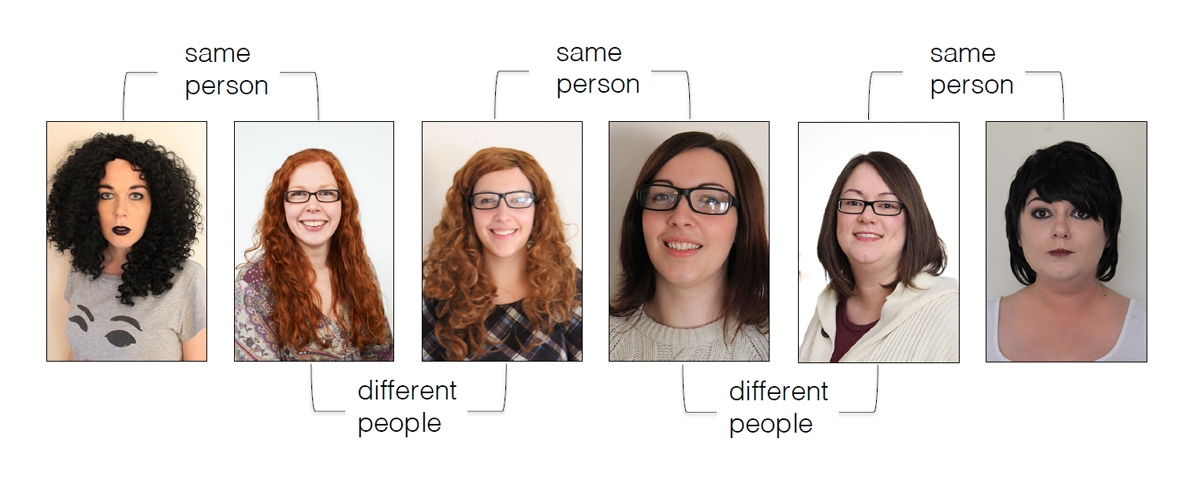Researcher Dr Eilidh Noyes proves that adopting a simple disguise will conceal your identity even from those who are actively looking for you
 Some of the disguises used in the research
Some of the disguises used in the researchSIMPLE disguises can be highly effective in concealing identity, according to research led by a University of Huddersfield lecturer. Her findings have significant implications in fields that include crime and security.
Dr Eilidh Noyes, lecturer in cognitive psychology at the University of Huddersfield, investigates face recognition. Her latest article – co-authored by Dr Rob Jenkins at the University of York – reports on a series of experiments designed to test people’s ability to see through disguise. The authors also provides a new database that can be used to test face recognition.
“This research investigates how disguise affects face recognition performance,” said Dr Noyes. “Most reports of human face recognition ability consider performance for ‘cooperative’ face images, meaning that the photographed person makes no attempt to change their appearance. Therefore, we might have previously overestimated real-world face recognition performance.”
“People may have strong incentives to look unlike themselves – such as a criminal on the run, an undercover police officer, or someone in witness protection. Alternatively, an individual may want to make themselves look like someone else, for example, in cases of stolen passports or identity fraud.”
In a recent case, Italian fugitive Cesare Battisti adopted a string of simple, but effective disguises during a lengthy spell on the run.
The researchers enlisted 26 volunteer models each photographed three times: in their normal guise, in a disguise that attempted to change their appearance (known as Evasion), and disguised as another volunteer (Impersonation).
The volunteers were free to disguise themselves as they wished. The disguises included changes in hairstyle, hair colour, removal/growth of facial hair, and/or make-up to change facial appearance. However, hats, scarves, and other items that are prohibited in passport identification were not allowed. New participants were then asked to make identity decisions for these images.
Disguise reduced face identification performance by around 30%. However, disguise type mattered. People made more identification errors for evasion cases than for impersonation.
There was no improvement in identification performance when participants were told that the faces might be in disguise. However, people who personally knew the photographed models were often able to see through the disguises.
Dr Noyes emphasised: “Our models used inexpensive simple disguises and there were no make-up artists involved. If people want to, it’s very easy to change their appearance.”
The images collated now form a database named FAÇADE. This database can be used both by academic researchers and by people working on security software.
“Even simple disguise reduces accuracy of human face recognition. Next, we will test how computer face recognition algorithms fare on the same tasks” said Dr Noyes.
- The article Deliberate disguise in face identification by Eilidh Noyes and Rob Jenkins appears in Journal of Experimental Psychology: Applied.
More news
Facial recognition – humans versus computers
Dr Eilidh Noyes was part of a major project to confirm whether forensic facial examiners could outperform the latest computer algorithms
Project explores social media and youth violence
The work, by Huddersfield criminologists, is being funded by the West Yorkshire Police and Crime Commissioner
Human traffickers use homeless for modern slavery
Over 200 people attended a conference to highlight the vulnerability of the people living on the streets to human trafficking
